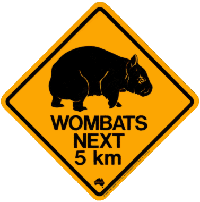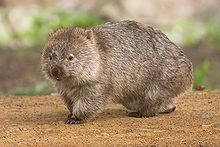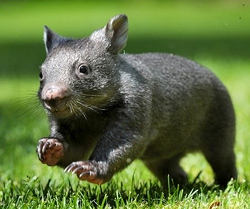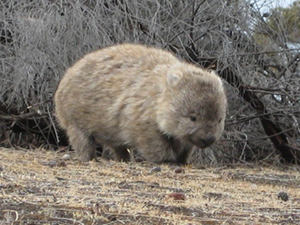Exploration of wombats

|
Don's
Exploration of wombats |

|

|
Wombats are short-legged, muscular quadrupedal marsupials, native to Australia, approximately 1 metre (40 in) in length with a short, stubby tail. They are adaptable in habitat tolerance, and are found in forested, mountainous, and heathland areas of south-eastern Australia, including Tasmania, as well as an isolated patch of about 300 hectares (740 acres) in Epping Forest National Park in central Queensland. |
|
Wombats dig extensive burrow systems with rodent-like front teeth and powerful claws. One distinctive adaptation of wombats is their backwards pouch. The advantage of a backwards-facing pouch is that when digging, the wombat does not gather dirt in its pouch over its young. Although mainly crepuscular and nocturnal, wombats also venture out to feed on cool or overcast days. They are not commonly seen, but leave ample evidence of their passage, treating fences as minor inconveniences to be gone through or under, and leaving distinctive cubic faeces. |

|

|
Since 2005 there has been an unofficial holiday called Wombat Day observed on 22 October, at the beginning of the traditional aboriginal spring planting season. |
|
The northern hairy-nosed wombat is an endangered species. The biggest threats the species faces are its small population size, predation by wild dogs, competition for food because of overgrazing by cattle and sheep, and disease. |
||
|
The only known wild populations of this species exist in two locations in Queensland, the Epping Forrest National Park, and a smaller colony being established by translocating wombats to the Richard Underwood Nature Refuge at Yarran Downs. This second colony is being created through the Xstrata reintroduction project which is being funded by Xstrata, a Swiss global mining company. |

|
The wombat population in the Epping Forrest National Park has been increasing since a predator-proof fence was erected in the park. According to the latest census, taken in 2007, the park is home to 138 of these endangered wombats. |